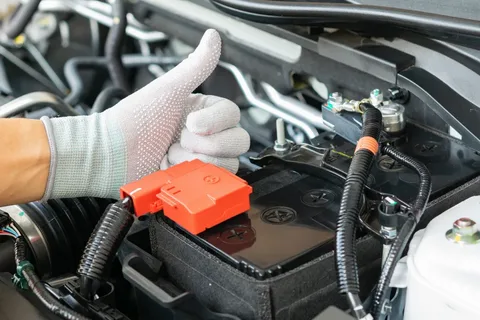- Hours Of Operation:Mon-Friday 8am - 6pm
- Towing Service: Open 24/7

When it comes to basic car maintenance, one key skill that often gets overlooked is how to safely disconnect battery terminals. Whether you’re replacing the battery, checking for corrosion, or performing electrical repairs, understanding this process can prevent damage to sensitive components. Understand car battery terminals to avoid mistakes that could lead to short circuits or injury. While it may seem complicated at first, it’s actually quite simple when broken down step by step. Always remove the negative terminal first and reconnect it last to avoid sparks or blown fuses. In this guide, we’ll cover the full process—including removal, installation, and those small but crucial details that make a big difference.
Let’s start with the obvious but often overlooked question: what are those terminals, and why are they so important?
Your car battery has two terminals: positive (+) and negative (–). They’re not just there for decoration. The positive terminal, usually covered in red, is the one that delivers power to the vehicle. The black negative terminal is what grounds the system to your car’s frame.
Think of it like this: electricity flows in a loop from the battery, through your car, and back to the battery. If you mess up the connections, you’re not just making a mistake, you could fry your electronics or even spark a short circuit.
Quick tip: Always disconnect the negative terminal first when removing a battery, and reconnect it last when installing. That one detail alone can save your vehicle’s entire electrical system.
Before you even think of picking up a wrench, hit pause and take a minute to prep.
It’s simple, but safety makes all the difference. Battery acid is corrosive, and a small slip with a wrench can lead to big trouble.
Not everyone wants to get their hands dirty but knowing how to deal with your battery is more useful than you might think. Here are six reasons why learning this pays off:
Every visit to a car mechanic shop adds up, especially for something as basic as a battery check or swap. Doing it yourself can save you both money and time.
Bonus tip: Your car’s manual has a ton of hidden gems including how to access and safely handle your battery. Give it a quick look before starting.
Picture this: you’re in a parking lot, it’s late, and your car won’t start. If you know how to safely jump-start a dead car battery, you can get back on the road without waiting for a tow truck.
Just remember: red clamp to positive, black clamp to metal, not the negative terminal.
Sometimes, it’s not your battery that’s dead, it’s just a bad connection. A loose or corroded terminal can mimic bigger problems. Learning to spot that saves you stress (and money).
Once you understand how to connect car battery terminals correctly, you’re not stuck relying on roadside services for every hiccup. You’ll have the confidence to get yourself back on the road.
Pro tip: If your dashboard lights flicker or electronics act weird after reconnecting, double-check the terminals for a secure fit.
Ever walked into a car battery shop and felt overwhelmed by the choices? Knowing the specs your car needs like size, cold cranking amps, or terminal type makes buying a new battery way less intimidating.
Ask for one that matches your car model and climate conditions.
Clean, tight connections mean better performance. Your lights won’t dim, electronics won’t glitch, and your engine will crank more smoothly.
Tip: After cleaning your terminals, dab a bit of petroleum jelly to prevent corrosion.
Okay, let’s get into the step-by-step part. Removing your car battery is easier than you think:
Tip: Don’t tilt the battery. Even sealed batteries can leak acid if turned too far.
Once the battery is out, take a minute to clean up. Corrosion on terminals can block electrical flow and shorten battery life.
Consider installing terminal protectors. They’re cheap and work wonders for long-term performance.
Ready to pop in the new battery? Here’s how to do it right:
That’s it! You’re done.
If you’ve followed all the steps and your car still won’t start, the issue might not be the battery. Alternators, starters, or wiring can also cause starting issues.
That’s when it’s best to head to a professional car mechanic shop. It’s better to get a full diagnostic check than to guess and risk more damage.
You don’t have to be an expert to maintain your car. A little knowledge goes a long way and understanding your battery setup is one of the easiest ways to stay in control.
So the next time your car refuses to start, you won’t panic. You’ll pop that hood, check the terminals, and know exactly what to do.